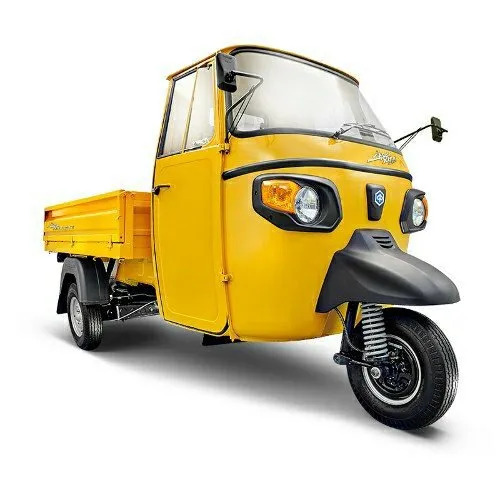Total Industry Volumes (TIVs) of E3Ws were 275,000 units overall, of which 25,000 were used for cargo applications and 250,000 for passenger applications. However, these figures include cars leased, rented, or subscribed to.
The 3-wheeler market had a strong increase of 57% year-over-year. In comparison, the tractor and commercial vehicle categories only saw moderate growth of 1% and 2%, respectively, according to statistics issued by Automobile Dealers Associations (FADA) on Friday.
Fuel-Efficiency Affects the Sales Drastically
The days of merely looking at style and body colour when buying an automobile no longer exist. When consumers purchase a commercial vehicle, fuel efficiency has become increasingly important. This choice becomes critical as the country’s automobile owners spend thousands of rupees on fuel each year.
Driving a fuel-efficient vehicle lowers potential management expenditures throughout the vehicle. For instance, diesel engines are way more fuel-efficient and may go over 80 miles on a single filling. This commercial 3-wheeler named Piaggio Ape Xtra LDX is among the newly launched fuel-efficient vehicles to help you sustain your business.
In addition, it helps you save money, as this will prevent you from frequent fillings. Moreover, as opposed to the frigid interior of a petrol station, the driver now has more time to experience the performance of a fuel-efficient vehicle while driving.
The Affect of COVID on the Sale of Commercial Vehicles
Sales of three-wheelers in the passenger and e-rickshaw categories increased at a healthy rate over pre-COVID levels. Additionally, a 2% YoY gain in retail sales helped the CV category sustain its upward trend.
The rural economy has yet to make much progress. For example, 2-wheeler sales are still down 19% from pre-COVID April 2019.
Dealers stated that the OBD 2A requirements were a big worry for car availability. However, according to FADA data, the favourable rise was further aided by the low base from the previous year.
Sales of 2-Wheelers are Still Facing a Decline
The two-wheeler market faced a reduction in sales of around 7% year-over-year as it continued to deteriorate.
Sales have been declining because of a shortage of product supply in the market brought on by the OBD 2A changeover, unexpected rains, pre-buying in March, model mix availability, rural mood, and sluggish demand in the 2-wheeler motorbike market.
FADA’s Report About the Sale
The FADA has encouraged the GST Council to consider lowering the GST on 2-wheelers from 28 to 18 per cent to assist in renewing this crucial sector, which accounts for 75% of the overall vehicle sales volume.
Additionally, the FADA anticipates the impending wedding season in May will boost revenues due to increased client queries.
Additionally, as electric cars (EVs) become more popular, more and more buyers are considering converting from internal combustion engines (ICE) to EVs, which might temporarily postpone purchasing choices.
Sales of Passenger Vehicles Drop for the First Time in Eight Months
The PV segment witnessed its first 1% growth in the last eight months due to the high base from last year and the OBD 2A standards, which increased vehicle prices and accelerated purchasing activity in March.
Despite the fact that supplies are improving, a sizable discrepancy exists between client demand and available inventory. Additionally, there are fewer purchasers of entry-level PVs, indicating that customers at the pyramid’s base still need to switch from 2-wheelers to 4-wheelers.
A problem in the market sector is rising inventory levels. To ensure a more effective alignment between market demand and available inventory, OEMs should concentrate on recalibrating their list and prioritise producing and delivering goods in high order.
What May be Anticipated in May?
According to FADA, the unseasonal rains and hailstorms damaging crops in some states may cause farmers to become more concerned, affecting the sales of entry-level 2-wheelers and passenger cars.
Meanwhile, there is an anticipation of some relief because May will bring the wedding season.
Conclusion
The growth of 3-wheeler commercial vehicles is a positive sign for the Indian logistics industry and the Indian GDP. However, a decline in the sale of 2-wheelers might be an opportunity for improving the 2-wheelers as per the demands of the customer base.
Additionally, the drastic improvements in features and technology in 3-wheeler commercial vehicles, along with their good mileage, are mainly responsible for further growth in sales. The estimated sales growth of 3-wheeler commercial vehicles is also constant due to technological improvements and features within an affordable price range.












